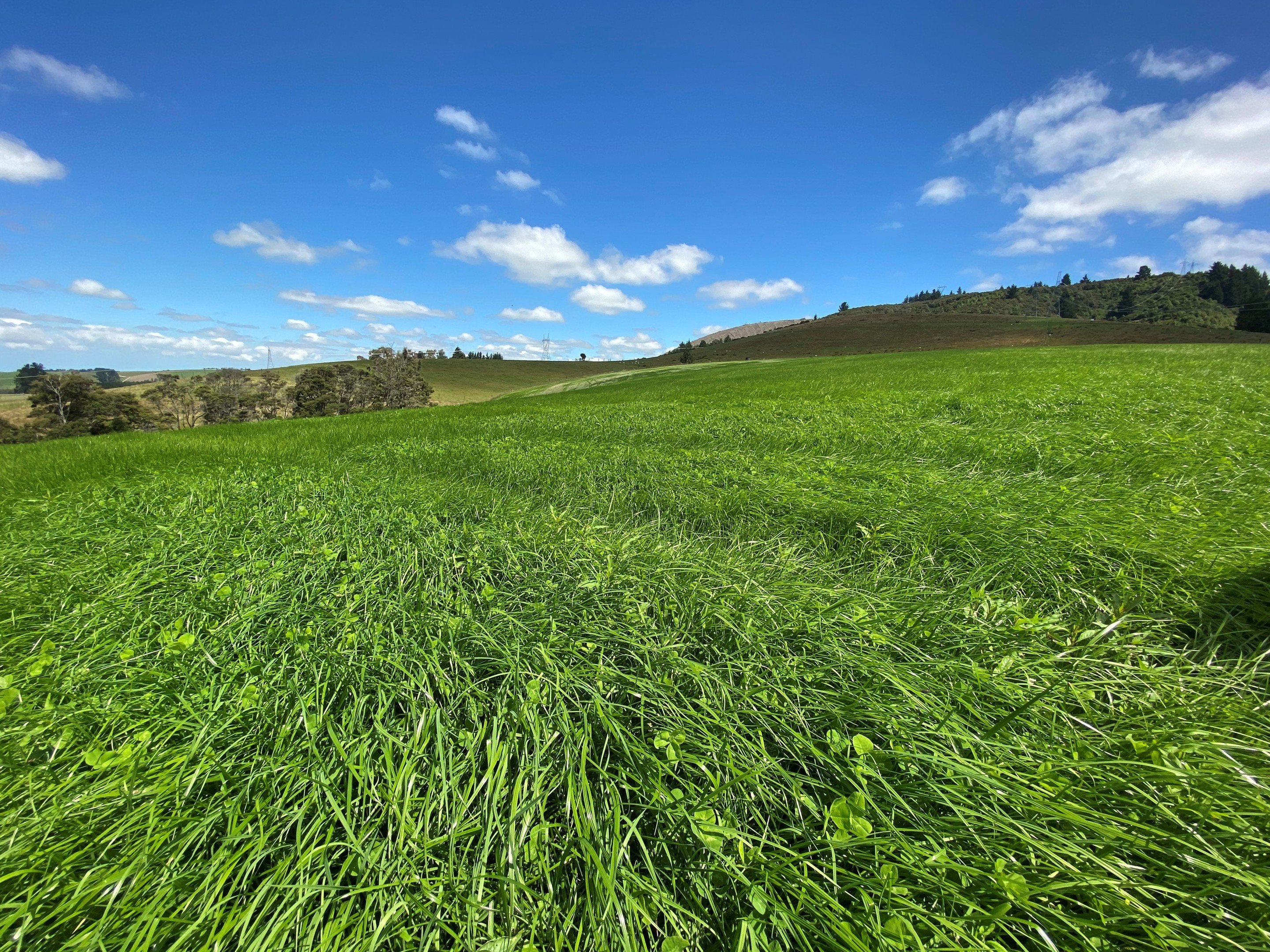Sow right – how to make new pastures feel right at home
Well-established seed gives great feed
New grass and clover seedlings are just like lambs and calves. If they don’t get a good start, their growth and production is compromised forever. They’re more difficult to manage, too.
Fortunately, giving grass and clover a good start is not hard! With careful preparation and sowing, your new spring-sown pasture will quickly settle in for a long and happy life, rewarding you with tonnes of farm grown feed.
You’ll end up with thriving, clover-rich pastures that are easy to graze and manage; well-nourished animals and a lasting return on your investment in new seed. What’s not to like?

Brrrr, it’s chilly
It can be tempting to sow early in spring, especially if the weather is erratic and you’re trying to make the most of fine spells to get onto paddocks while they’re not too wet.
Early in itself is not always a problem; what really matters is that your seed goes in the ground at the right soil temperature to germinate. For ryegrass and clover, that’s 10oC and rising. Any colder, and establishment will be slow, and patchy.
When that happens, spring-germinating weeds are ready to take advantage of the situation! They’ll steal nutrients, water and light from young grass and clover seedlings that do get established, and make their lives even harder.
Room to grow
How you plant new pasture is just as important as when you plant it! Given a choice, your ryegrass and clover seed will be happiest spread evenly across the paddock, via broadcast, roller-drill or a drill with narrow row spacing.
Why? Two reasons – less room for weeds to push their way in, and a better start for clover, which takes longer to establish than ryegrass.
Keeping weeds at bay from the very start saves having to spend time and money controlling them later. It also lengthens the lifetime of your new pasture. As for clover, the more we have in our pastures, the better.
Balancing act
But what if spreading seed evenly across the paddock doesn’t work for you? Successful broadcasting, roller-drilling or narrow row drilling requires cultivation. Sometimes, that preparation might not be practical.
If you need to direct drill, you can use a single pass. But this is a bit like packing too many lambs or calves into one pen, and expecting them all to do well. The seed ends up squashed tightly in each row. Clover usually struggles, and weeds have room to establish in bare ground between the rows.
Consider instead cross or diamond drilling, using two passes of a direct drill in different directions. You can still do this without having to cultivate, and you’ll get better ground coverage with your seed than with a single pass.
Depth matters!
Whatever sowing technique you (or your contractor) use, spare a special thought for those clover seeds. They’re very small, and easily buried. So aim to sow ryegrass and clover mixes no deeper than 5-10 mm.
That will give you the best establishment.
What next?
We’re here to help you get the best out of your new pasture this spring. Book your free personal Pasture Health Check at https://www.barenbrug.co.nz/book-a-visit today.


